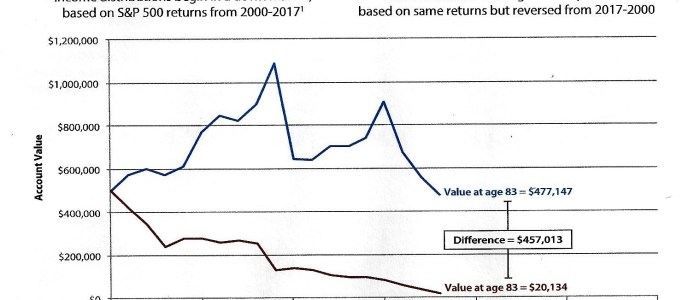
You’ve invested over the years and now you’re ready to retire and withdraw income from your retirement nest egg. How long will your money last? There are a number of variables at play, but one you should know is the sequence of returns. If you start taking income withdrawals from your portfolio in a down
Early Negative Returns vs. Early Positive Returns Hypothetical Example
Jim, age 65, has $500,000 in savings invested in an index fund that mirrors the performance of the S&P 500®. He begins to withdraw 5% each year for income.
Compare the difference in his portfolio balance in the graph below. In each scenario, the average annual rate of return is 4.95 percent. But starting withdrawals in years with negative returns yields a very different portfolio outcome than when withdrawals begin in years with positive returns.

At age 83, Jim has only $20,134 left in account value (scenario A), when withdrawals began in a



 event you suffer a catastrophic medical event, such as a stroke or an accident, that leaves you unable to communicate your wishes. Every adult should plan ahead by completing an Advance Directive that specifies his or her personal preferences in regard to acceptable and unacceptable medical treatments. There are two types of Advance Directives:
event you suffer a catastrophic medical event, such as a stroke or an accident, that leaves you unable to communicate your wishes. Every adult should plan ahead by completing an Advance Directive that specifies his or her personal preferences in regard to acceptable and unacceptable medical treatments. There are two types of Advance Directives:
 Regardless of your reasons for giving, a gift of life insurance can represent a substantial future gift to a favorite charity at relatively little cost to you. You can:
Regardless of your reasons for giving, a gift of life insurance can represent a substantial future gift to a favorite charity at relatively little cost to you. You can: